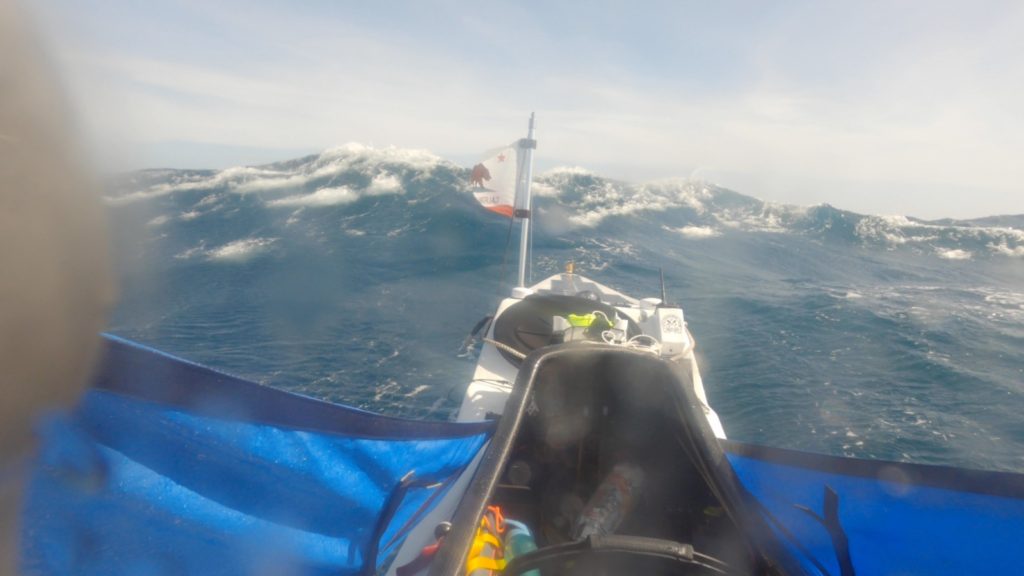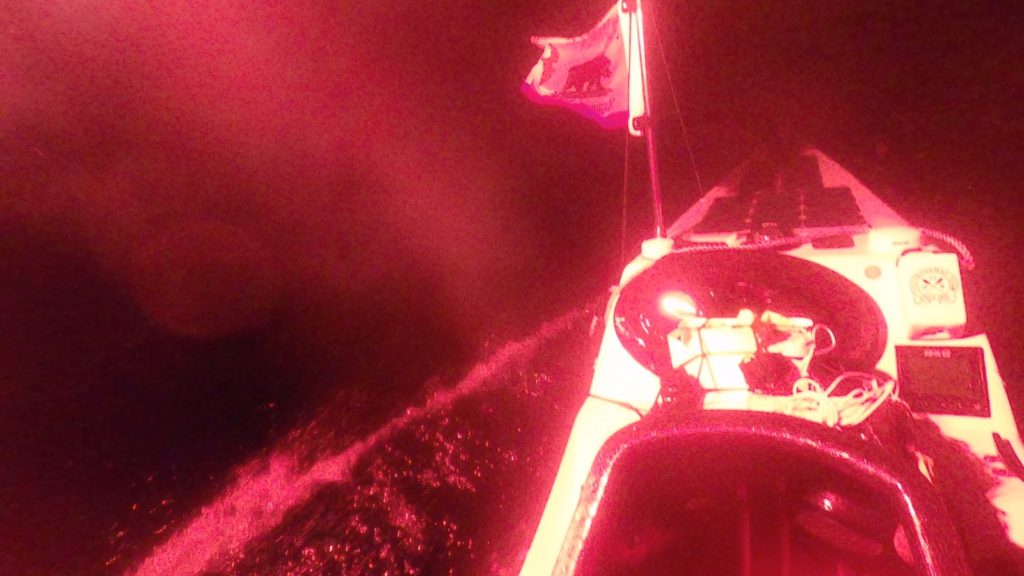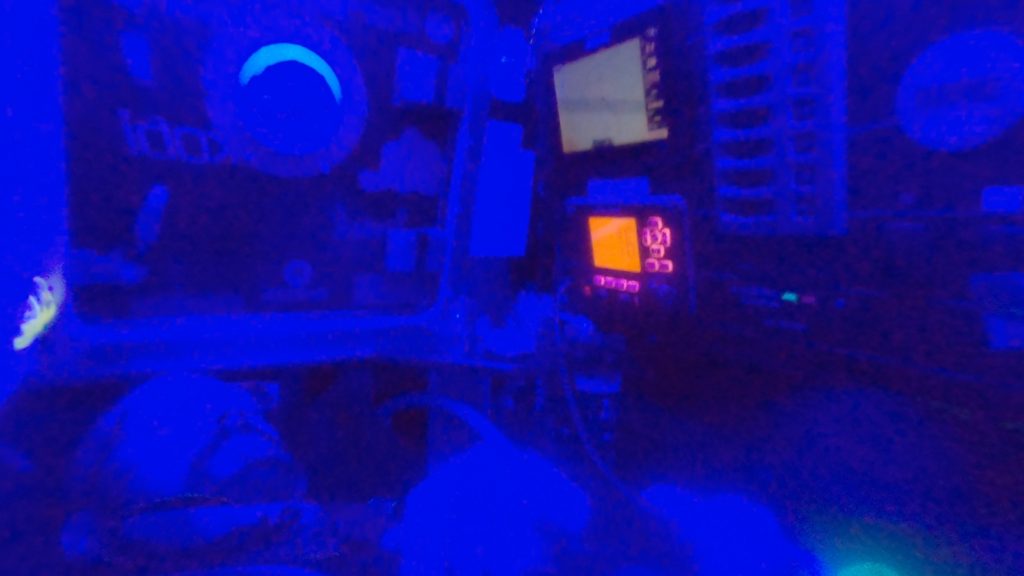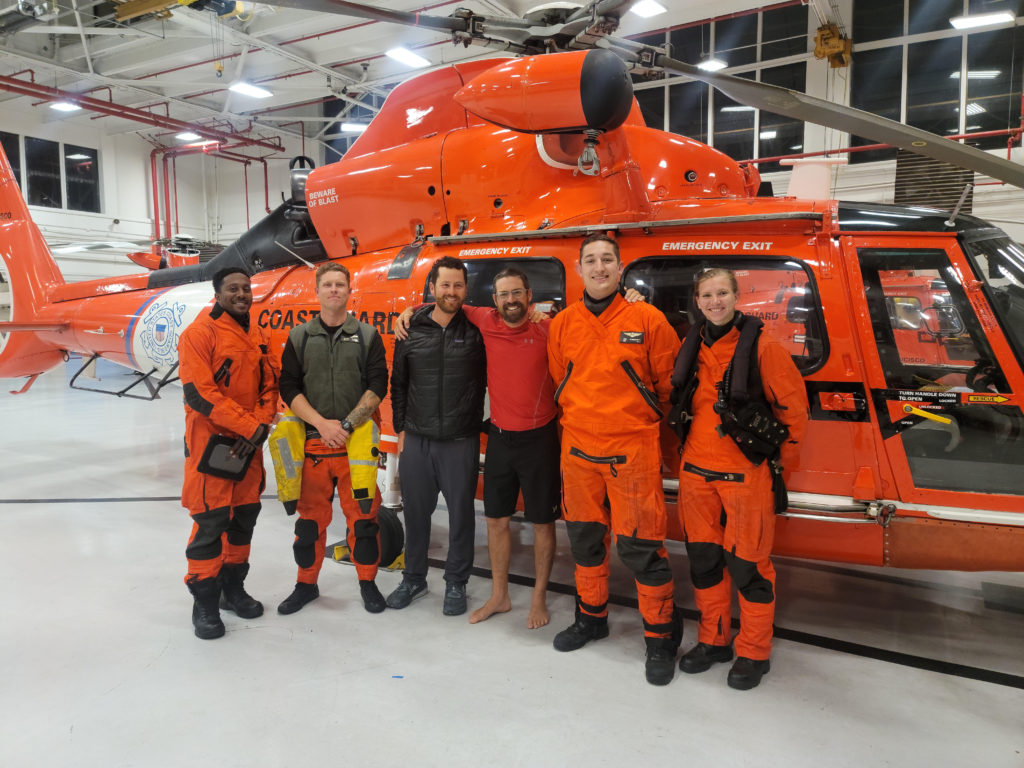[![]() ] Yesterday’s day had started well …
] Yesterday’s day had started well …
Immobilized under the sea anchor for 3 days to let pass safely a period of strong winds accompanied by a deterioration of the sea state, the conditions aboard my ocean kayak were uncomfortable but within the limits that we had anticipated.
As predicted by my weather router, the conditions deteriorated progressively to reach winds of 30-35 knots, gusts to 45 knots, for a sea increasingly formed with troughs of 4.5 meters, the waves breaking on the cabin of my kayak with an impressive noise. However, my sea anchor was playing its stabilizing role well and the situation remained manageable.
This changed unfavorably yesterday at 9 p.m. when my ground crew told me that they had lost the AIS signal for 3 hours. I then notice that my navigation system has lost the GPS signal and couldn’t recover it. As we were working with my team on a solution to this electronic problem, the general behavior of my kayak suddenly changed, which I immediately attributed to a sea anchor damage. In a few moments my kayak was positioned almost parallel to the axis of the waves, and I found myself violently tossed from side to side, along with all the equipment that was stored in the cabin.
Attempts to get out to more accurately assess the condition of the sea anchor and to resolve the issue were unsuccessful and resulted in water entering my cabin. I didn’t know if I had lost the anchor or if it had collapsed on itself, but it was sure that the recovery line had once again become caught in the rudder. In the weather conditions at the time, and even attached to my lifeline, it was out of the question to take the risk of getting into the water as I had done 2 days before.
As night had just fallen, it was clear that the situation was not sustainable: Inability to eat, drink, sleep, communicate easily with my team ashore. With my land support crew, we then reported the situation I was in to the US Coast Guard to jointly explore all possible options.
Being still quite close to land (60nm) and considering the deteriorating weather conditions which could have made a rescue operation more complex and dangerous for all in the days to come, I made the very difficult decision to request an evacuation.
The Search & Rescue operation was then set up very quickly and I was hoisted up that night around midnight by the US Coast Guard, whom I thank very much for their professionalism and efficiency.
I am therefore now safe, on land, and we are studying with my support team, on the one hand the solutions for recovering my kayak which is adrift, and on the other hand all the scenarios for the future.
I would like to thank all those who are passionate about and follow this crossing day by day. I knew from the start that it would be a difficult thing, and I am sure that it was also this commitment that attracted you to my project. All the preparation for this expedition was made under the sign of risk control and safety, and it is also this control that guided my choices last night.
Great joys arise from our challenges and the ambition we put into them, and when there are great difficulties, it is because the challenge is great!
Morale is good, I still have my passion for this adventure intact, and I am still determined to make it happen… I won’t give up!!!
#Lifeisanadventure
[![]() ] La journée d’hier avait pourtant bien commencé…
] La journée d’hier avait pourtant bien commencé…
Immobilisé sous ancre flottante depuis 3 jours pour laisser passer, en sécurité, une période de vents forts accompagnés d’une dégradation de l’état de la mer, les conditions à bord de mon kayak océanique étaient inconfortables mais dans les limites de ce que nous avions anticipé.
Comme cela était prévu par mon routeur météo, les conditions se dégradaient régulièrement pour atteindre des vents de 30-35 nœuds, rafales à 45 nœuds, pour une mer de plus en plus formée avec des creux de 4,5 mètres, les vagues déferlant sur la cabine de mon kayak avec un bruit impressionnant. Pour autant, mon ancre flottante jouait bien son rôle de stabilisation et la situation restait gérable.
Celle-ci a défavorablement évolué hier à 21h lorsque mon équipe au sol m’a indiqué avoir perdu le signal AIS depuis 3 heures. Je constate alors que mon système de navigation a perdu le signal GPS et n’arrive pas à le récupérer. Alors que nous travaillons avec mon équipe sur une solution à ce problème électronique, le comportement général de mon kayak a soudainement changé, ce que j’ai attribué immédiatement a une avarie touchant l’ancre flottante. En quelques instants mon kayak s’est positionné parallèlement à l’axe des vagues, et je me suis retrouvé violemment balloté de bord à bord, ainsi que tout le matériel qui était stocké dans la cabine.
Les tentatives de sortie pour évaluer plus précisément l’état de l’ancre flottante et tenter de résoudre l’avarie ont été infructueuses et ont occasionné des entrées d’eau dans ma cabine. Je ne savais pas si j’avais perdu l’ancre ou si elle s’était refermée sur elle-même, mais il était au moins déjà établi que sa corde de récupération s’était une nouvelle fois prise dans la dérive, et dans les conditions météo du moment, et même attaché à ma ligne de vie, il était hors de question de prendre le risque de me mettre à l’eau comme je l’avais fait 2 jours avant.
Alors que la nuit venait de tomber, il était clair que la situation n’était pas durable : Impossibilité de manger, boire, dormir, communiquer facilement avec mon équipe à terre. Avec celle-ci, nous avons alors signalé la situation dans laquelle je me trouvais aux gardes-côtes pour étudier ensemble toutes les options possibles.
Étant assez proche de la terre (60mn), et considérant les conditions météos en dégradation qui auraient pu rendre une opération de sauvetage plus complexe et dangereuse pour tous dans les jours à venir, j’ai pris la très difficile décision de demander une évacuation.L’opération de Search & Rescue s’est alors mise en place très rapidement et j’ai été hélitreuillé cette nuit vers minuit par les gardes-côtes américains que je remercie infiniment pour leur professionnalisme et leur efficacité.
Je suis donc maintenant en sécurité, à terre, et nous étudions avec mon équipe de support, d’une part les solutions de récupération de mon kayak qui est à la dérive, et d’autre part tous les scénarios pour la suite.
Je tiens à remercier tous ceux qui se passionnent et suivent au jour le jour cette traversée. Je savais depuis le début que ce serait une chose difficile, et je suis certain que c’est aussi cet engagement qui vous a attirés vers mon projet. Toute la préparation de cette expédition a été faite sous le signe de la maîtrise des risques, et c’est aussi cette maîtrise qui a guidé mes choix de cette nuit.
Les grandes joies naissent de nos défis et de l’ambition que l’on y met, et quand il y a de grandes difficultés, c’est parce que le défi est grand !
Le moral est bon, je garde la niaque, et je suis toujours déterminé… on ne lâche rien !!!




